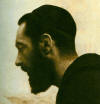 Young Padre Pio.
Young Padre Pio.
Italian Army 1915-1918, age 28-31
Italy entered WWI on May 23, 1915. Every able body was needed, and many Capuchin
friars were drafted. The convents where depleted.[1]
[2]
[3]
In letters to his spiritual director and to his friends Padre Pio gave insight
in what was going on with him.[4]
Padre Pio used to refer to his military service as “My one hundred days.” In
reality he spent as active duty 182 effective days in four different periods of
time that he used to call “stations” in the Italian Army.[5]
Pietrelcina, June 8, 1915: “I feel that
the draft of my class 1987 is not far away.
This thought concerns me a bit, because I don’t know what will happen. I am
sick, I am sick of an incurable disease, according to the doctors. But, in these
so sad days, who knows if the military doctors will consider me sick.”[6]
Pietrelcina, November 1, 1915: “Today the
classes of ’86 and ’87 have been recruited. I am included in the ’87.”[7]
Pietrelcina, November 4, 1915:
“It is two days before my departure. I feel very strong inside. I have no idea
of what is going to happen to me. Jesus wants to keep me in the dark on this
matter. In the military doctors, especially in my district, I find little or
none humanity. My sickness is quite evident and known to all; but I fear that a
painful surprise is waiting for me. I hope that the most clement God averts this
lightning from my head!”[8]
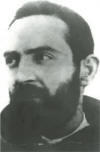 Young
Padre Pio
Young
Padre Pio
On November 6, 1915 Padre Pio, at age 28, left Pietrelcina to go to the military
district in Benevento. A medical officer examined him and diagnosed him as
suffering of tuberculosis. He sent him to the military hospital in Caserta for
further evaluation.
[9]
[10]
Caserta, November 18, 1915: “The
ferocious captain doctor in Benevento visited me and diagnosed pulmonary
tuberculosis, and sent me here eight days ago in the military hospital in
Caserta, for further evaluation. Here the exam of the rude medical colonel was a
pure formality and he said that the new superiors in the regiment would take
care of me”[11]
On December 4, 1915 he was designated recruit #12094, and assigned to the
Infantry, 10th Company of the Medical Corps, 4th platoon,
stationed in Napoli at the Sales barracks. He had to be in Naples on December 6.[12]
[13]
[14]
Pietrelcina December 5, 1915:
“Tomorrow I will have to leave for Napoli. I have been assigned to the 10th
medical company. This is a very hard test for me.”[15]
 The train station "Stazione Centrale" in Piazza
Garibaldi at the times of Padre Pio.
The train station "Stazione Centrale" in Piazza
Garibaldi at the times of Padre Pio.
Padre Pio presented himself to the barracks in Napoli, on December 6, 1915. He
was not given a military uniform yet, because his status was pending, and was
asked to provide meals and lodging outside the military compound, while waiting
for a medical evaluation. He was staying at the pension of Maria Valillo, in Via
Cappuccinelle, 18.[16]
[17]
Napoli, December 12, 1915: “I have been
asking for a physical exam since day one, but the captain doctor states that he
is extremely busy. I am longing for the moment I can get out of this prison; I
have not been assigned a military uniform yet.”[18]
Napoli, December 13, 1915:
“The captain doctor is delaying day by day my exam.”[19]
Napoli, December 17, 1915: “Deo Gratias!
They did moments ago a physical exam and they gave me a year of convalescent
leave because of my illness: pulmonary infiltration.”[20]
[21]
 "La Torretta" The one room dwelling were Padre Pio
lived in Pietrelcina after the ordination to priesthood.
"La Torretta" The one room dwelling were Padre Pio
lived in Pietrelcina after the ordination to priesthood.
Pietrelcina, December 20, 1915:
“On Saturday the 18th, with the help of Jesus I came back from
Napoli.”[22]
The fact that Padre Pio, because of his poor health, had to stay at home in
Pietrelcina and not in the convent, had his superiors feeling uneasy about it.
They tried repeatedly to have him return to the conventual community life. Soon
an opportunity came about to have Padre Pio to go to the Capuchin convent in
Foggia.[23]
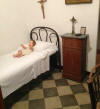
 The cell of Padre Pio in the convent of St. Anna in
Foggia.
The cell of Padre Pio in the convent of St. Anna in
Foggia.
On January 31, 1916, Padre
Agostino wrote to Padre Pio that the noblewoman Raffaelina Cerase, gravely ill,
had expressed the desire to meet Padre Pio before dying. He suggested to him to
make the trip to Foggia to visit her.[24]
Padre Agostino didn’t want to
pick him up, because in previous occasions the people of Pietrelcina had
insulted him fearing that “our little saint” would be removed from town. Padre
Agostino “feared a lynching”.[25]
On February 17, 1916 Padre Pio, having agreed with the request, left Pietrelcina
and reached the convent of St. Anna in Foggia. He thought that he would stay
there only few days; instead he remained for about six months, until September
4, 1916.[26]
Raffaelina Cerase was born in Foggia in 1868 from a rich and noble family. In 1914, at the suggestion of Padre Benedetto, she started spiritual direction with Padre Pio by correspondence. At that time Padre Pio was living at his home in Pietrelcina in convalescent leave from the Italian Army.
Padre
Pio was unable to reenter the convent because of poor health. Raffaelina and her
sister Giovina, both also in poor health, were living together. Raffaelina wrote
the first letter on March 24, 1914, and received the answer from Padre Pio on
March 29, 1914. Padre Pio wrote 56 letters, and Raffaelina 41. The 97 letters
make the content of volume 2 of the Epistolario. The last letter from Padre Pio
is dated December 30 1915.
.[27]
Although he was decades her junior, Padre Pio did not hesitate to adopt a paternal tone in his letters to her and she one of childlike submission.
Padre Pio considered the spiritual direction as a need
stemming from the function of being a priest, through the action of the Holy
Spirit, in order to guide a soul to reach perfection.
Epist.II, 46-53
Padre
Benedetto and Padre Agostino adhered to her desire, hoping that Padre Pio would
move to Foggia, reentering in permanently in a convent. Padre Pio left
Pietrelcina for Foggia on February 17, 1916. The same day he went with Padre
Agostino to visit Raffaelina.
[29]
[30]
Padre Pio often celebrated Mass in the private chapel of the noblewoman, and remained there for two or three hours and then he would return to the friary.
Raffaelina Cerase was visited daily by Padre Pio from February 17, 1916, until the day of her death on March 25, 1916.
On
March 24.Padre Pio left Raffaelina’s home in the early afternoon and went back
to the convent.
Raffaelina
died in the early hours of March 25. At 4:00 in the morning of the 25th
a man knocked at the door of the convent. Padre Nazareno da Arpaise opened the
door. The man said that Raffaelina Cerase had died. Padre Nazareno went to tell
the news Padre Pio. Padre Pio: “I know. I assisted her: she went straight to
Paradise.”[31]
[32]
Devils
While in Foggia Padre Pio usually did not join the friars for dinner. One
evening the friars heard a terrible noise coming from Padre Pio’s room. They run
to his room and found him beaten and prostrated. He was sweating so profusely
that the undershirt looked like it had just been removed from a basin full of
water.
[33]
That was until the Superior ordered Padre Pio to ask the Lord to stop those
noises that disturbed the peace and scared the friars. Padre Pio obediently
asked, and the noises coming from the devils stopped.[34]
[35]
[36]
On another evening, as reported by Padre Paolino da Casacalenda, Mons. Andrea
D’Agostino, Bishop of Ariano Irpino was staying at the friary. At dinnertime he
was notified of the noises that frequently came from Padre Pio’s room. He said:
“The Middle Age is over, and you still believe in these things?” Only few
seconds passed, and they heard “an infernal fracas” coming from Padre Pio’s
room. Mons. D’Ambrosio was so scared that he didn’t want to stay any longer, and
left the convent on the spot.[37]
[38]
Padre Paolino da Casacalenda was about to leave Padre Pio's cell, in the Foggia
convent, after a conversation with him. Padre Pio asked: "Don't leave; otherwise
the devils (cosacci) will come." He stayed a little longer and then left. But
just a few steps away he heard a terrible noise, and run back. Padre Pio had
been assaulted. He was pale and sweating profusely.[39]
 The convent in San Giovanni Rotondo when Padre Pio moved there.
The convent in San Giovanni Rotondo when Padre Pio moved there.
While in Foggia, Padre Pio’s health was not good. On July 28, 1916, Padre Pio
went from Foggia to San Giovanni Rotondo,
25 miles away, to visit Padre Paolino, the superior at the convent, for few
days. The cooler mountain air and fresh breezes proved extremely beneficial to
his health, and the quiet and solitude were most agreeable to his spirit.[40]
[41]
He asked the provincial superior to be transferred to that convent.[42]
The request was granted on August 17.[43]
On September 4, 1916 Padre Pio left Foggia for San Giovanni Rotondo.[44]
The convent would be his permanent home for next 52 years, except for the stint
in military service, until his death.[45]
Lucia Fiorentino
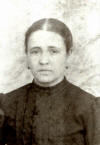
Lucia Fiorentino, born and raised in San Giovanni Rotondo, met Padre Pio in July 1916, the very first time he visited San Giovanni Rotondo from the convent of Foggia.
At that time he was still active duty in the Italian Army, on convalescent leave .
Lucia was introduced to Padre Pio by Padre Paolino da Casacalenda, the superior of the convent.
Lucia became one of the first spiritual daughters. She had been very religious since her childhood, and had frequent mystical experiences, where Jesus would talk to her.
In 1906, Jesus told her that a priest would come one day to the convent, and would be like a very large tree, covering the whole world with his shade. When Lucia met Padre Pio ten years later, she did not make the connection to the tree. Jesus himself told her, on August 19, 1923: “Do you remember what I told you in 1906? The tree is Padre Pio. The souls who will listen to him will move forward; those who despise, slander, and deride him will be punished.” Lucia met Padre Pio every other week, for ten minutes of spiritual direction.
Under
obedience, she wrote a Diary, in sixteen notebooks. Some of them have not been
found. The part going from 1929 to 1932 was published in Foggia, in 1967: M.
Preziosi, Lucia Fiorentino, figlia spiritual di Padre Pio.
[46]
She also exchanged letters with him. Only sever remain,
because she decided to burn the letters as a gesture of detachment and as
assertion that “God only is the owner of my heart.” When Padre Pio was put in
isolation in 1931-33, she offered herself “as a victim, for the liberation of
Padre Pio.” She died few months later, on February 16, 1934.
[47]
Epist. III, 469-489
In December 1916, at the expiration of the twelve months of convalescent leave,
Padre Pio returned to the military district of Napoli.[48]
 Souvenir
plaque at #30 SS. Cosma e Damiano street, were Padre Pio stayed in Naples.
Souvenir
plaque at #30 SS. Cosma e Damiano street, were Padre Pio stayed in Naples.
In Napoli he stayed for room and board at the pension of Carolina Montanile, who
was a native of Petrelcina.[49]
Her pension was located on #30 SS. Cosma e Damiano street.[50]
Saturday December 16, was set as a date for his medical examination at the
military hospital in Napoli. In that examination the diagnosis of the previous
year was confirmed, and he was put under observation.


 Trinity Military Hospital in Naples at the times of Padre Pio.
Trinity Military Hospital in Naples at the times of Padre Pio.
On December 21 after a second examination he was sent to the Trinity Military
Hospital for further evaluation.
During this stay in Naples Padre Pio was visited by his father Zi’ Grazio, who
brough him fresh products from the farm in Piana Romana.[51]
He spent Christmas at the Hospital. He assisted to the midnight Mass with the
other soldiers. In the morning he said Mass alone, with one other recruit
serving at the altar.[52]
[53]
[54]
[55]
On December 30, after a third examination he was given a six month convalescent
leave, with the instruction to wait for new orders. Padre Pio left the military
hospital on January 2, 1917. He had brief stays in Pompei, Pietrelcina, and
Foggia, and returned to San Giovanni Rotondo on January 6, 1917.[56]
[57]
December 30, 1916, Trinity Military Hospital:
“Just this morning I had last physical
examination and they gave me only six months of convalescent leave. I’m happy
anyway.”[58]
“They
wrote: pulmonary infiltration on both apexes and chronic bronchial catarrh
widely diffused.”[59]
Back in San Giovanni Rotondo Padre Pio tried to resume a normal life in the
convent, but he fell ill.
San Giovani Rotondo, February 8, 1917:
“I have been sick of pneumonia, with very high fevers.”[60]
For Padre Pio the longest trip of his life was the one from San Giovanni Rotondo
to Rome. He accompanied his sister 22 years old Graziella to Rome, where she
would take the veil in the Order of St. Bridget. He left San Giovanni Rotondo
May 14, 1917, went to Pietrelcina the 15th, and the 16th
he and his sister left for Rome. He returned to San Giovanni Rotondo the 23rd
of the same month.[61]
[62]
Padre Agostino repeatedly asked Padre Pio to give him details of his trip to
Rome, to no avail. On June 9, 1917 Padre Pio wrote to him: “I am sorry I can’t
satisfy your request in the two last letters. That’s what Jesus wants and so be
it.”[63]
[64]
[65]
On June 30, 1917 the six months of convalescent leave had expired. In the
official record of service there is clearly written that he “Returned to the
Corps on June 30, 1917.” (‘Ritornato al Corpo iol 30Giugno 1917’).[66]
However Padre Pio was still in San Giovanni Rotondo, on August 18, 1917, because
he was waiting for instructions. On that day he received an order by telegraph
to report immediately to the Military Corps, as he reported in a letter. He left
San Giovanni Rotondo On August 19, and was in the barracks on August 20.[67]
San Giovanni Rotondo, August 18, 1917:
I have been recalled by telegraph for military service. I will have to leave
right away tomorrow morning. May God help me in this hard trial, and free me as
soon as possible.”[68]
A story of Padre Pio deserted by misunderstanding is reported frequently.
[69]
[70]
[71]
[72]
[73]
[74]
[75]
[76]
[77]
[78]
[79]
[80]
[81]
[82]
However it doesn’t seem to have solid ground.[83]
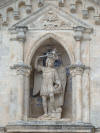



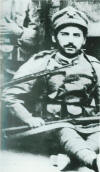 Padre Pio in military uniforme with the fourth platoon
of the
Tenth Company of Italian Medical Corps
Padre Pio in military uniforme with the fourth platoon
of the
Tenth Company of Italian Medical Corps
Back in the Sales barracks in Naples, on August 20, 1917, Padre Pio had two
physical examinations and got the same diagnosis of infiltration of pulmonary
apex.[85]
He was kept on observation. A following exam on August 26, confirmed the
diagnosis and Padre Pio was transferred to the fist medical clinic of the
University Hospital.[86]
There, he had an exam on September 24, and despite confirming the diagnosis, he
was declared able for internal services and assigned to infantry.
[87]
[88]
[89]
He asked to be assigned to the health services, and after some negotiation his
papers were changed and he went to the Tenth Company of Italian Medical Corps,
fourth platoon, stationed in the Sales barracks.
[90]
Napoli, September 4, 1917:
“By now I have resigned myself. Jesus wants that I too, like many others of our
brothers, do military service. I’d like to be wrong, but it’s not possible.”[91]
On September 4, 1917 he was assigned a military uniform and he had to put in
storage the Capuchin habit. He stayed in uniform until November 5, 1917.[92]
Padre Pio remembered frequently in his older age, in a humorous way, conversing
amiably with friars and friends, those challenging months.[93]
[94]
While in uniform he was holding open an umbrella during a thunderstorm. In
crossing Piazza Dante he was stopped by an officer and reminded that it was
absolutely forbidden to carry an umbrella while in military uniform. Padre Pio
recalled how the officer mellowed up during the conversation, and let him go
unpunished, even suggesting which tram to take to reach faster the barracks.[95]
For fear that his clothes whould be stolen, he put on everything he had. When he
was asked to undress, at a physical exam on September 4, 1917, it was not an
easy task. The doctor, observing the layers removed, remarked that he had put on
an entire store of clothes![96]
Because of his condition he was ordered special meals, including chicken. The
chicken ended up in the drawer of the bedside table, and later in the stomachs
of other patients.[97]
In October 1917 the soldier Forgione was sent to the train station to pick up 12
wounded soldiers.
[98]
Upon their return the captain pointed out that there were not 12 but 13 sick
soldiers. He had included Padre Pio in the group sick. “Aren’t you the sickest
of them all?”[99]
During this stay in Naples, Padre Pio was visited by his father Zi’ Grazio.[100]
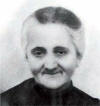 Giuseppina Morgera
Giuseppina Morgera
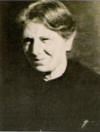 Antonietta Vona
Antonietta Vona
During his stay in Naples Padre Pio met two of his spiritual daughters, and he
started a correspondence with them for spiritual direction.
Giuseppina Morgera, from Casamicciola, a town on the island of Ischia, received
several letters from Padre Pio, but those letters have not been found.[101]
Antonietta Vona from Castrocielo in the province of Frosinone, was living with
Giuseppina in Casamicciola. She received forty letters from Padre Pio. They are
included in the third volume of the Epistolary.[102]
On November 5, 1917 he got again four months of convalescent leave, and after a
brief stay in Pietrelcina he returned to San Giovanni Rotondo the 12th
of November.[103]
General Luigi Cadorna was the Supreme Commander of Italian Army, when Italy
suffered a humiliating defeat when six hundred thousands troups either deserted
or surrendered to the Austrians at Caporetto, on November 9, 1917. Cadorna was
relieved of his command.[104]
Alone in his office he was about to pull the trigger to shoot himself. A
Capuchin friar appeared in front of him. "General, you will not do this
stupidity!" He didn’t.
[105]
After the war he recognized Padre Pio in a picture, and went to visit
unannounced.
Padre Pio from afar: "Yeah, general, we had a narrow escape that night!"[106]
[107]


 Streets of Napoli at the times of Padre Pio's
military service
Streets of Napoli at the times of Padre Pio's
military service
On March 5, 1918, Padre Pio was again at the military district in Naples.
The next day he was visited by a team of military doctors at the Trinity
Military Hospital in Naples. During the routine physical, Padre Pio's
temperature was taken by dr. Giuseppe Grieco, lieutenant medical doctor in the
Italian Army, with an armpit mercury thermometer. In less than one minute the
thermometer cracked, having gone over the maximum temperature of 42C (107.6).
Three other thermometers cracked the same way. Dr. Grieco called in a colleague
dr. Francesco Melle.
They decided to try with a bath thermometer, removed from the casing that could
read up to 80C (176F). The thermometer read 48C (118.4).
They couldn't believe it, so they tried with a laboratory precision thermometer.
This time the temperature was 49C (120.2).
They informed the captain prof. Dr. Felice D'Onofrio, chief of medical services.
He came in, measured again, and the reading was 49C. "This is a mystery. This is
impossible. I can't believe my eyes. He should be in agony. This man is either a
saint or a devil." He prescribed quinine and went to see him in the morning. He
took again the temperature and was 36.7C (98.06). "I don't understand anything.
Let's send him home to die in peace."
[108]
[109]
[110]
[111]

 Matricular record of Francesco Forgione Padre Pio given to the capuchin
friars, on February 2, 2012, by Col. Luciano Iannetta of the Military District
of Caserta, were he belonged.
Matricular record of Francesco Forgione Padre Pio given to the capuchin
friars, on February 2, 2012, by Col. Luciano Iannetta of the Military District
of Caserta, were he belonged.
The 15th of that month he was granted honorable discharge from the
Italian Army, with the medical diagnosis of “double broncho-alveolitis”.
[112]
[113]
March 6, 1918:
“I am in the Trinity Military hospital. Today I had a favorable physical exam.
They will submit me to further testing.”[114]
March 9, 1918:
“Since the day before yesterday I am in this medical clinic, for better testing.
It has been three days that I have an un-abating fever.”[115]
March 15 1918:
“I am superlatively glad that God’s grace delivered me completely from the
military. Soon my discharge papers will be signed so that he will happily leave
Napoli, promising never to come back. I am full of bugs, up to the top of the
hair.”[116]







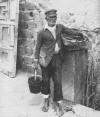









Padre Pio left definitely the barracks. He was give 1 lira for the trip back
home. On his way to the train station he spent 50c of the lira he had to buy a
paper umbrella from a street vendor out of compassion.[117]
He ordered a coffee at the bar.
When he went to the cashier he was told that somebody else had already paid for
his coffee. He was not able to identify the donor.[118]
After he reached Benevento by train he went on the bus for Pietrelcina. The fee
was 1,80 lire to be paid to the ticket man when he passed by. On the bus he sat
alone. Soon a man sat beside him. The man offered him a hot cup of coffee from a
thermos he had. When the ticket man came to him Padre Pio was prepared to say
that he did not have the money for the ride but could offer to pay once reached
home in Pietrelcina.When the ticket man came, he told Padre Pio that his ticket
had already been paid for. Padre Pio looked around, but there was nobody to
thank. When he got off the bus in Pietrelcina he looked around because he wanted
to thank the man for the coffee. He did no see him anymore, like he had
disappeared.[119]
[120]
At home in Pietrelcina everybody,
including family and relatives, wanted to see him in uniform; so he had to put
it on and off several times. When he patiently did it he would say: "Are you
happy now? You have seen the clown!"[121]
Zi’ Grazio asked Padre Pio to leave his uniform and military equipment with him.
Padre Pio: “No, this is not mine. It belongs to the Government.”[122]
[123]
On March 18, 1918 Padre Pio was back for good in San Giovanni Rotondo.[124]
[125]
On June 11, 1921 Padre Pio answered a question by Mons. Rossi:
“As for the military service, I was in
active duty only for a few days, because of my poor health. I was often sent on
convalescent leave until I was dismissed permanently the March preceding the
Armistice. I spent those few days in the military in Naples, as a patient at the
hospital.”[126]
Padre Ignazio da Jelsi on June 17, 1921 to Mons. Rossi: “They granted him a
military pension, on account of his tuberculosis, and now they suspended it,
since it was found that the illness was pre-existing. And according to Padre Pio
the bacteriological analysis done in Napoli gave a negative result.”[127]
[128]
Allegri,
R. (2000). La vita e i miracoli di Padre Pio.
Milano: Oscar Mondadori. All00
Capuano, P. (2012). Con p. Pio: come in una fiaba.
Foggia: Grafiche Grilli. Cap12
Castelli, F. (2011). Padre Pio under
investigation. The secret Vatican files. San
Francisco: Ignatius Press. Cas11
Chiron, Y. (1999). Padre Pio. Una strada di
misericordia. Milano: Figlie di San Paolo. Chi99
Convento. (2001). Padre Pio dalla Terra al Cielo.
San Giovanni Rotondo: Edizioni Frati Cappuccini. Con01
DeLiso,
O. (1962). Padre Pio.
New York: All Saints Press. DeL62
Gallagher, J. (1995). Padre Pio, The pierced
priest. London: HarperCollins. Gal95
Giannuzzo, E. (2012). San Pio da Pietrelcina. Il
travagliato persorso della sua vita terrena.
Book sprint edizioni. Gia12
Gigliozzi, G. (1965). Padre Pio.
New York: Pocket Cardinal Edition. Gig65
Ingoldsby, M. (1978). Padre Pio. His Life and
Mission. Dublin: Veritas Publications. Ing78
Malatesta, E. (1999). La vera storia di Padre Pio.
Casale Monferrato: PIEMME. Mal99
Mortimer Carty, f. C. (1973). Padre Pio the
stigmatist. TAN Books. Mor73
Napolitano, F. (1978). Padre Pio of Pietrelcina.
A brief biography. San Giovanni Rotondo:
Edizioni Padre Pio. Nap78
Parente, P. (1968). A city on a Mountain.
Washington, NJ: Ave Maria Institute. Par68
Pavullo, B. d. (1987). Padre Pio visto da vicino.
San Giovanni Rotondo: Edizioni Padre Pio. Pav87
Pietrelcina, P. P. (2011). Epistolario I,
Corrispondenza con i direttori spirituali (1910-1922), a cura di Melchiorre da
Pobladura e Alessandro da Ripabottoni, IV edizione.
San Giovanni Rotondo: Edizioni Padre Pio da Pietrelcina. Epist. I
Pietrelcina, P. P. (2011). Epistolario II,
corrispondenza con la nobildonna Raffaelina Cerase (1914-5).
San Giovanni Rotondo: Edizioni Padre Pio. Epist. II
Pietrelcina, P. P. (2012). Epistolario III,
corrispondenza con le figlie spirituali (1915-1923).
San Giovanni Rotondo: Edizioni Padre Pio. Epist. III
Preziuso, G. (2000). The life of Padre Pio
between the altar and the confessional. New
York: Alba House. Pre00
Rega,
F. M. (2005). Padre Pio and America.
Rockford: TAN books. Reg05
Ripabottoni, A. d. (2000). Padre Pio racconta e
dice. San Giovanni Rotondo: Edizioni Padre Pio.
Rip00
Ruffin, C. B. (1991). Padre Pio: the true story.
Huntington, Indiana: Our Sunday Visitor, Inc. Ruf91
Winowska, M. (1988). Il vero volto di Padre Pio.
Milano: Edizioni San Paolo. Win88
[1] Epist. I, 11
[2] Ing78, 39
[3] Reg05, 28
[4] Ing78, 39-40
[5] Cap12, 130
[6] Epist. II,
440
[7] Epist. I,
686
[8] Epist. II,
527-9
[9] Pre00, 75
[10] Chi99, 85
[11] Epist., I,
689
[12] Pre00, 75
[13] Cap12, 144
[14] Par68, 29
[15] Epist. II,
530
[16] Epist. I,
696
[17] Chi99, 86
[18] Epist., I,
696
[19] Epist II,
532
[20] Epist. I,
699
[21] Epist. II,
536
[22] Epist. I,
701
[23] Epist. I,
11
[24] Epist I,
730
[25] Epist I,
730-1, Note
[26] Con01, 141
[27] Epist. II
[28] Mal99, 58
[29] Epist. II,
9
[30] Reg05, 30
[31] Chi99, 89
[32] Con01, 145
[33] Cat91,
166-7
[34] Ruf91,
127-8
[35] Chi99, 90-1
[36] Con01,
143-4
[37] Pao78,
54-57
[38] Con01, 144
[39] Con01, 144
[40] Reg05, 32
[41] Con01, 151
[42] Epist I,
798
[43] Con01, 152
[44] Con01, 152
[45] Epist. I,
12
[46] Epist. III,
469
[47] Epist. III,
469-71
[48] Chi99,99
[49] Cap12, 148
[50] Mal99, 59
[51] Mal99, 59
[52] Cap12,
148-151
[53] Ale00,
104-7
[54] Mal99, 63-4
[55] Pre00, 90-2
[56] Cap12, 151
[57] Chi99,99
[58] Epist. I,
852
[59] Epist. I,
853
[60] Epist I,
866
[61] Epist.I,
896 Note
[62] Chi101-2
[63] Epist. I,
901
[64] Cap12, 155
[65] Chi99, 102
[66] Cap12, 154
[67] Cap12, 154
[68] Epist. I,
929
[69] Cap12, 155
[70] Chi99, 103
[71] Par68, 31
[72] Nap79, 29
[73] Gia12,112-3
[74] Cap12,
155-6
[75] Gal95, 72
[76] Ruf91, 134
[77] Win88, 65
[78] Del62, 54-6
[79] Gig65,
58-61
[80] Pas68, 30-1
[81] Mor73, 8-9
[82] Reg05, 44-5
[83] Cap12,
155-6
[84] Pre00, 92-3
[85] Epist. I,
931
[86] Epist. I,
933
[87] Cap12, 158
[88] Gal95, 73
[89] Chi103-4
[90] Bon87, 52
[91] Epist. I,
936-7
[92] Cap12, 158
[93] Ale00,
108-9
[94] Ale00, 162
[95] Cap12,
168-9
[96] Cap12, 159
[97] Pre00, 96
[98] Mal99, 60
[99] Pre00, 94
[100] Win88, 67
[101] Mal99, 57
[102] Epist.
III, 811-906
[103] Epist. I,
742
[104] Ruf91, 146
[105] Chi99,
105-6
[106] Win88, 100
[107] Cap12,
163-4
[108] All00,
178-84
[109] Cap12, 168
[110] Gia12, 168
[111] Del62,
52-7
[112] Epist. I,
742
[113] Epist. I,
12
[114] Epist. I,
1004
[115] Epist. I,
1004-5
[116] Epist. I,
1005-6
[117] Pre00, 96
[118] Pre00, 96
[119] Mal99,
75-9
[120] Pre00,
96-7
[121] Cap12, 169
[122] Win88, 68
[123] Pas68, 31
[124] Epist. I,
742
[125] Ing78, 40
[126] Cas11, 200
[127] Cas11, 170
[128] Del62, 57